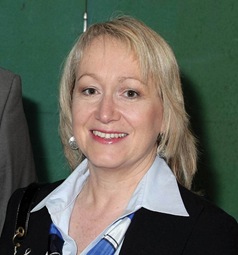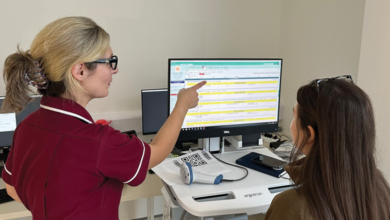Joined-up surgery
 Delays or overruns in surgery can distress patients and hold up an expensive part of the Health Service. Karen O’Loan explained how the Theatre Management System is improving surgery at our ICT in health seminar.
Delays or overruns in surgery can distress patients and hold up an expensive part of the Health Service. Karen O’Loan explained how the Theatre Management System is improving surgery at our ICT in health seminar.
The Health Service’s Theatre Management System (TMS) is making surgery more streamlined, according to Karen O’Loan who has been leading the system’s implementation over the last two years. O’Loan is the Health and Social Care Board’s Assistant Director of Performance Management and Service Improvement and has worked in healthcare ICT since 1991.
An Audit Office report in October 2003 confirmed that there were too many cancellations and unnecessary delays in Northern Ireland’s operating theatres. This highly expensive part of the Health Service was therefore being underused and indeed there was little information on how the theatres were being managed.
In response, the Health Service developed the TMS. Its regional business case was approved in October 2005 and the contract was subsequently awarded to BT and Scottish software company Newgate.
Many of its aims are common sense i.e. that staff are properly organised before theatre and have the correct equipment.
The system aims to join up all the processes used in surgery, starting with how patients are ‘booked’ for operations. Any patient admitted to hospital will be recorded on the Patient Administration System and put on to a waiting list if they require surgery.
Each record has its unique health and social care number, to avoid duplication, and records are downloaded to the TMS for scheduling. Operations can be delayed if the patient is not ready so the pre-operative assessment module provides a checklist at that stage.
Correct equipment and stock can be also ordered over the system from the hospital’s central sterile supplies department. A surgeon’s assistant module directly helps clinicians by allowing them to record diagnoses, notes and drawings in real-time. Endoscopy images and notes are also recorded.
“There’s no point in just putting out a system that is just going to collect statistics or help with scheduling but actually give no clinical benefit to the surgeons or the nurses,” O’Loan remarked.
The booking and scheduled system was first to go live, at Belfast City Hospital in April 2007. The Causeway, Lagan Valley and Downe hospitals followed suit over the next year.
Pressure from MLAs then prompted a major acceleration. The Public Accounts Committee strongly welcomed the system in April 2008 and said it should be made available across the province “as a matter of urgency.” The Minister promised this would take place by December 2008 and it was so. Twelve new hospitals received the TMS with Antrim being the last on 20 December.
During 2009, the Health and Social Care Board focused on how TMS linked through to the data warehouse and how downloads were enabled. Introducing the system required a cultural change as all theatres needed to have a common set of codes, and the same definitions of when surgery started and when it ended.
For the surgeon’s assistant, staff sat down and developed it with the clinicians, going through four iterations until it was released. The pre-operational module has now been piloted in the Northern Trust.
The benefits have been three-fold: improved planning for operations, a more “straightforward and streamlined” process, and a ‘global’ presence i.e. an overview of the relevant notes and activities. “You’ve got an oversight of theatres that wasn’t there before.” It has also helped staff from different disciplines work together.
An extra 15 to 20 operations per week are taking place in Belfast as a result.
Lessons learned have included the “absolutely imperative” importance of clinical ‘buy-in’ i.e. that staff understand how it works and allowing for a change management budget as changes will always be made as staff use the system and suggest improvements. The system also has to be available 24-7.
O’Loan finds, though, that the public thinks these systems should be in place already. People are used to modern ICT when they use banks or airlines so they have the same expectations when they go into hospital.





